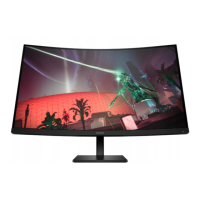3) Place the new component on the circuit board. Be sure that it matches the footprint.
4) Solder the new component.
Function test
After repair, be sure to confirm that all functions are working.
Support and troubleshooting
The following table lists possible problems, the possible cause or each problem, and the recommended solutions.
Function test
After repair, be sure to confirm that all functions are working.
Table 4-1: Function test
Confirm whether image displays and sound plays
correctly on the monitor.
Confirm whether image displays and sound plays
correctly on the monitor.
Change volume and balance to confirm whether
volume is smooth and loud enough.
Confirm whether image displays and sound plays
correctly on the monitor.
Confirm whether image displays and sound plays
correctly on the monitor.
Change volume and balance to confirm whether
volume is smooth and loud enough.
Screen is blank or
video is flashing.
Power cord is disconnected.
Press the monitor power
button.
NOTE: If pressing the Power
button has no effect, press
and hold the power button for
10 seconds to disable the
Power button lockout feature.
Video cable is improperly connected.
Connect the video cable
properly.
System is in Auto-Sleep Mode.
Press any key on the
keyboard or move the mouse
to inactivate the screen
blanking utility.
Video card is incompatible.
Open the OSD menu and
select the Input menu. Set
Auto- Switch Input to Off
and manually select the
input. Or replace the video
card or connect the video
cable to one of the
computer’s on-board video
sources.
Image appears blurred,
indistinct, or too dark.
Brightness setting is too low.
Open the OSD menu and
select Brightness to adjust the
brightness scale as needed.
Monitor video cable is disconnected.

